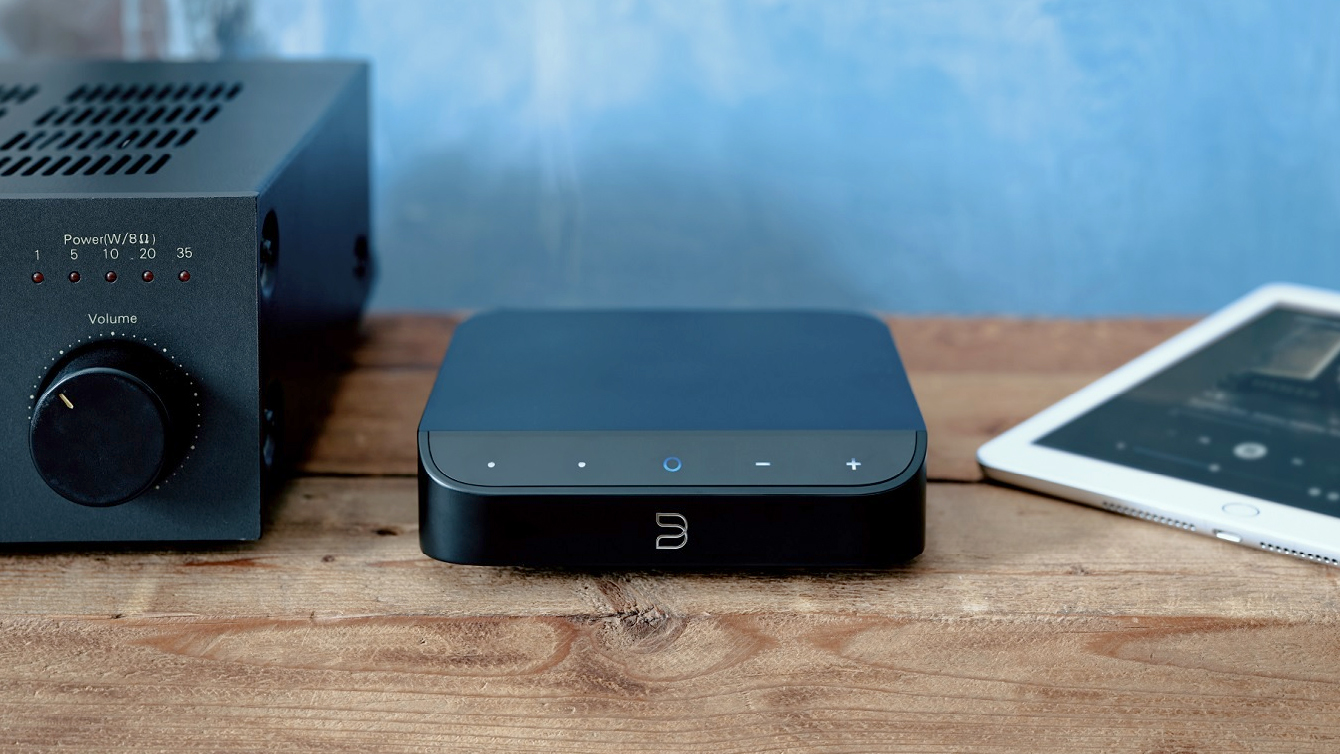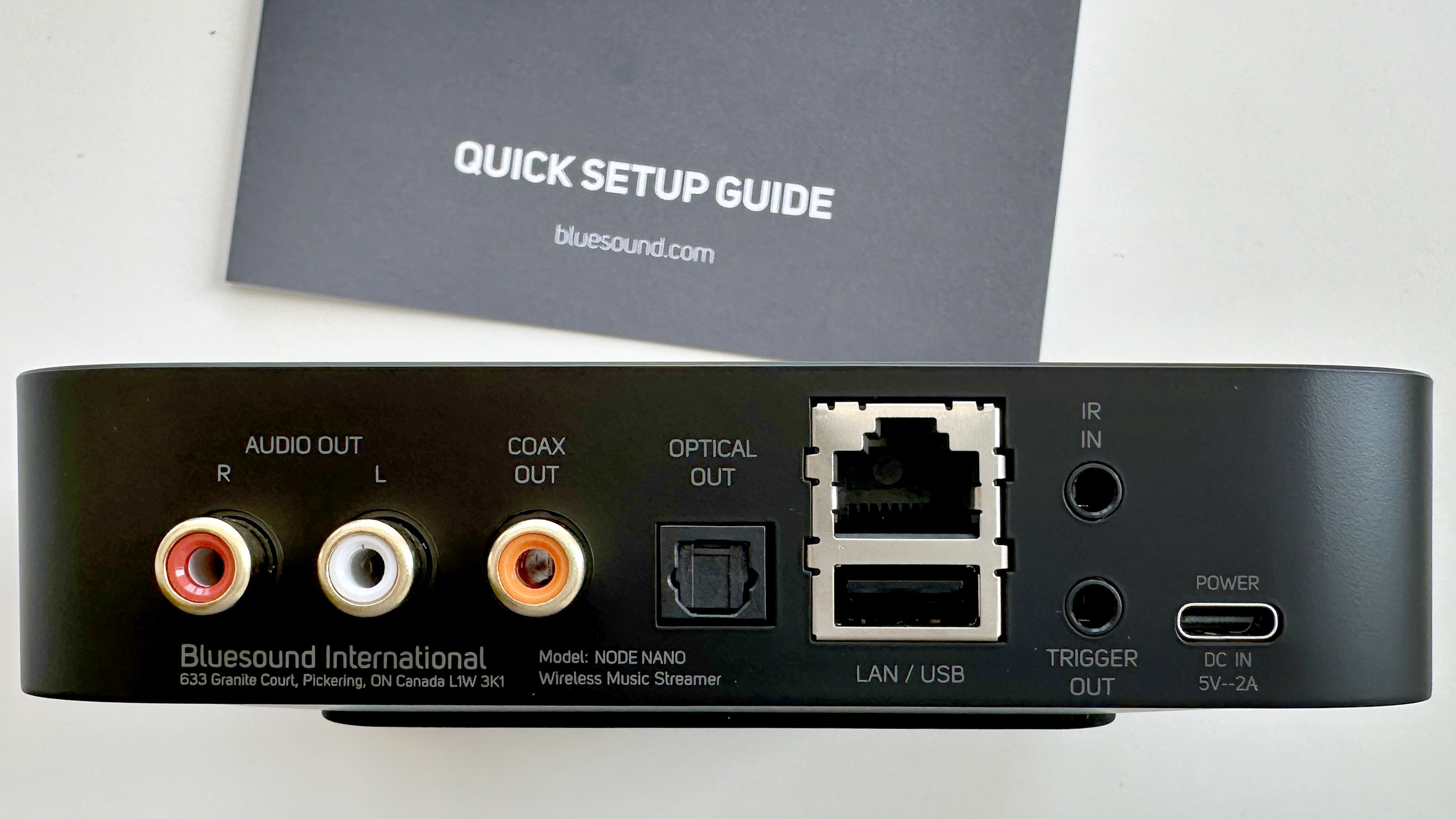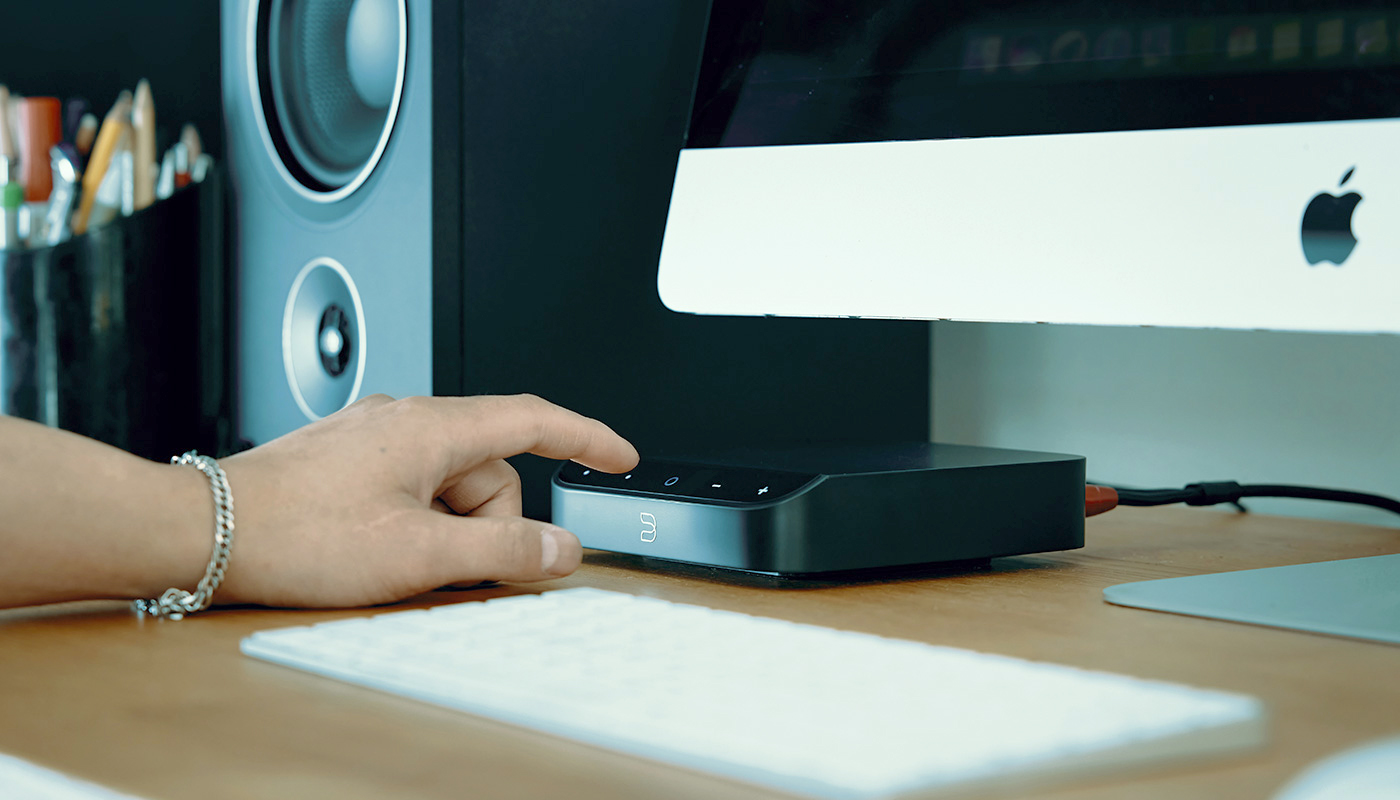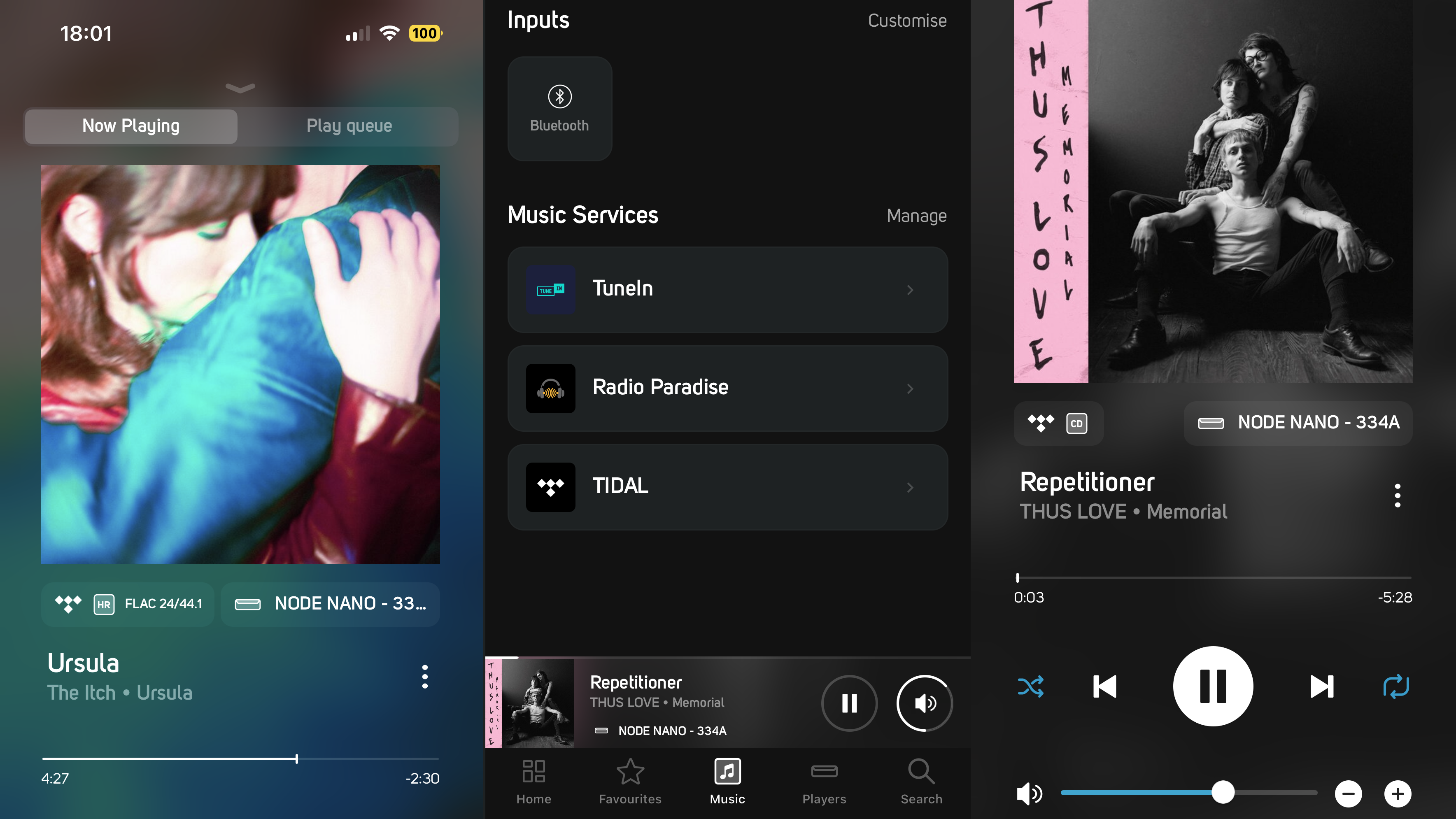
It’s not hard to picture the good people at Bluesound raising a glass to the realisation that Sonos has done its utmost to burn its reputation to the ground (with a broken new app). It leaves the Canadian company – the first, let’s not forget, to offer properly high-resolution domestic wireless streaming – and its BluOS partners ideally positioned to pick up the slack and become the go-to wireless multi-room audio ecosystem.
The Node Nano on review here is the first new Bluesound product to launch since this scenario became an actual possibility. So does it offer a credible gateway into a brave new world of multi-room audio as one of the best music streaming DACs?
Bluesound Node Nano: Price & Availability
The Bluesound Node Nano is on sale now, and in the United Kingdom it’s priced at £299. In the United States it goes for $299, while in Australia it sells for AU$499.
It’s fair to say there are very few music streamers priced at this sort of money, but the competition from below (notably from WiiM) and above (from the likes of Cambridge Audio) is strong. So let’s hope the Nano doesn’t get caught in no-man’s land...
Bluesound Node Nano review: Features & What's New?

As it’s the smallest and most affordable member of Bluesound’s family of network audio devices, it’s hardly surprising that the Node Nano is far from the most lavishly specified Bluesound product you can buy. But that doesn’t mean it hasn’t got it where it counts.
For instance, its ESS ES9039Q2M Sabre DAC is capable of dealing with PCM content (of every worthwhile file type) up to 24bit/192kHz resolution – and an imminent software upgrade will bring DSD256 compatibility too. It’s Roon Ready, and has Apple AirPlay 2, Spotify Connect and Tidal Connect integrated, along with internet radio.
Ethernet connectivity is complemented by dual-band Wi-Fi, and there’s also Bluetooth 5.2 connectivity with aptX Adaptive codec compatibility. Outputs extend to stereo RCA analogue sockets, along with digital optical, digital coaxial and USB-A outputs in case you’re running one of the best DACs even more capable than the Nano’s own.
There’s no HDMI socket, which is a bit of a miss, and there’s no headphone socket either – but a software upgrade (the same one? Who can say?) will bring two-way Bluetooth connectivity, so wireless headphones can be catered for.
Of course, broadly speaking there is nothing here that isn’t available for less money from the likes of WiiM, or for more money and in a metal chassis from Cambridge Audio. But where the Bluesound Node Nano really puts meaningful distance between itself and its nominal rivals, at least as far as functionality is concerned, is with the scope of the BluOS ecosystem of which it’s a part.
Not only can BluOS support as many as 64 network-connected hi-res audio zones, but the breadth of the product types involved is pretty impressive too. The involvement of companies as credible as NAD, Cyrus, Dali, Roksan, Monitor Audio and PSB means that it doesn’t matter whether you fancy a single-zone streamer or a full-on, reference standard multi-room audio extravaganza, BluOS can take care of it.
Bluesound Node Nano review: Performance

The Bluesound Node Nano can happily deal with 24bit/192kHz FLAC files – so it seems only reasonable to stream a few in order to find out what it’s made of. And with an analogue connection made to a Heed Obelisk Si integrated amplifier, it turns out to have plenty going for it.
What’s perhaps most immediately impressive is the zip and drive the Bluesound can summon. It snaps into low-frequency information with real purpose, controlling the bottom end well and keeping both momentum and rhythmic expression believable. It’s an engaged and enthusiastic listen and serves up a more solidly robust sound than I was, for some reason, expecting.
There’s plenty of detail revealed and contextualised at every stage, and the Nano communicates through the midrange in impressive style. The top of the frequency range balances attack against substance confidently, and the entirety of the frequency range hangs together in a convincing and naturalistic manner.
There’s a fair amount of dynamic headroom available for when the going gets intense, and even at the moments of highest crisis the Bluesound sounds composed and balanced. Big shifts in volume or emphasis don’t faze it, and its tonal balance remains confidently neutral at all times.
Really, about the only meaningful shortcoming in the context of a reasonably affordable music streamer is out-and-out scale – there just isn’t all that much of it. Obviously this isn’t an issue if you’re listening to ‘voice-and-guitar’ singer-songwriterly stuff, but switch it up to a bigger band arrangement and the soundstage isn’t all that expansive.
It’s not as if the Bluesound sounds two-dimensional, but there’s a slight-but-definite sensation of congestion that’s only more apparent if you choose to listen to, say, a full-scale symphony orchestra. Elbow-room on the stage is at a premium, and the sound is relatively cramped as a result.
Bluesound Node Nano review: Design & Usability

At 36 x 143 x 143mm (HxWxD) the Bluesound Node Nano is a discreet little thing – and it’s rendered even more discreet by the black-only finish. As far as ‘design’ goes, there’s a little slope at the front of the chassis where the illuminated touch-controls live, and some useful rubber feet on the bottom to prevent it being towed around by its own cables. Other than a little stylised ‘B’ logo, that’s your lot – there’s ‘anonymous’ and then there’s the little plastic box that is the Bluesound Node Nano.
Getting it up and running couldn’t be simpler. The Node nano is supplied with a mains power plug that features a USB-A slot, and a usefully long length of cable to connect it to the USB-C power slot on the rear of the device. The BluOS control app – which now stands alone as the most extensive, the most stable and the most logical control app for a multi-room audio system – wastes no time in getting the Node Nano onto your network, and from there it’s easy to get what you want. Need to connect to more BluOS-enabled devices? Want to access internet radio or your network-attached storage? Want to integrate your favourite music streaming service (except for Apple Music)? Go right ahead – it’s a piece of cake.
The touch-controls on the fascia extend to ‘volume up/down’ and ‘play/pause’. There’s another LED indicating status (power, standby, upgrading or what-have-you) and two touch-points for accessing preset radio stations, playlist or whatever you decide you want them to access.
Bluesound Node Nano review: Verdict

As a stand-alone music streamer, the Bluesound Node Nano does what it does in some style – but it doesn’t do anything that some more affordable alternatives can do just as effectively.
But if the Nano is going to be just a part of your BluOS multi-room high-resolution audio system, it becomes a rather more compelling proposition indeed.
Also consider
On a price-equivalent basis, the WiiM Pro Plus might be the most effective hi-res audio streamer you can currently buy. It doesn’t produce quite as hefty a sound as the Node Nano, and it doesn’t have the extended multi-room potential of the Bluesound either – but it nevertheless sounds great and is simple to operate. As a toe in the music-streaming water, it makes all kinds of sense.







